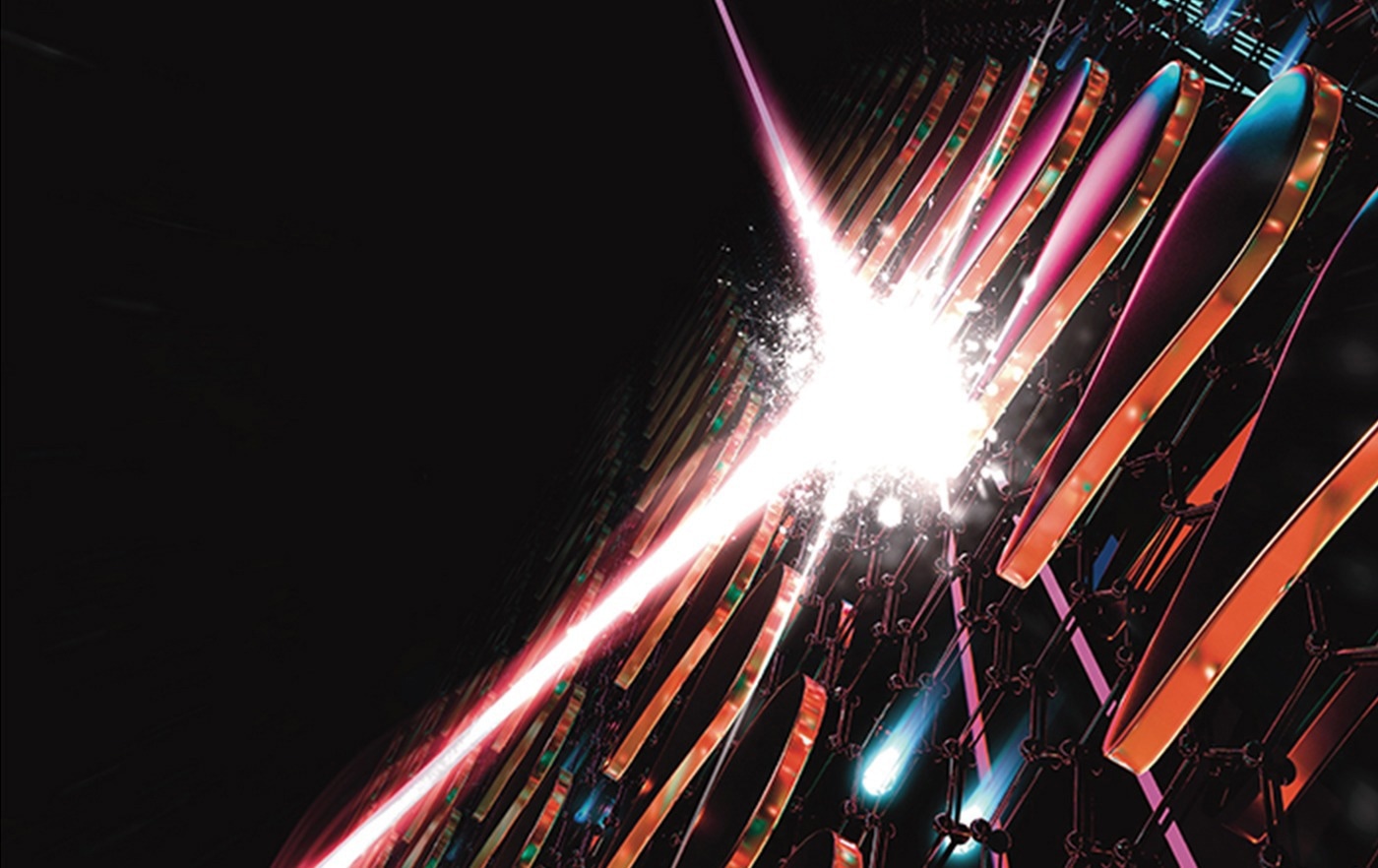Scientists at Los Alamos National Laboratory are developing nanometer-scale light-based systems that could lead to breakthroughs in ultrafast microelectronics, room-temperature infrared detection (for example, night vision), and a wide range of technological applications.
 Gold nanoantennas concentrate light waves into intense nanoscale “hot spots,” which excite electrons within an underlying atomically thin graphene layer. The asymmetric structure then points the electrons along a specific direction, driving electrical currents that are controllable and tunable at nanometer scales. Image Credit: Julia Chen
Gold nanoantennas concentrate light waves into intense nanoscale “hot spots,” which excite electrons within an underlying atomically thin graphene layer. The asymmetric structure then points the electrons along a specific direction, driving electrical currents that are controllable and tunable at nanometer scales. Image Credit: Julia Chen
Most modern technologies, from computers to applications like energy harvesting, are built on the ability to push electrons around. But the way we control this charge flow remains very limited by conventional materials and structures.
Jacob Pettine, Physicist, Center for Integrated Nanotechnologies, Los Alamos National Laboratory
Nanoantennas Capture and Focus Light
According to their recent Nature article, the researchers developed and produced asymmetric, nano-sized gold objects on an atomically thin layer of graphene. The gold structures are known as “nanoantennas” because they collect and focus light waves, resulting in optical "hot spots" that excite the electrons in graphene. Only the graphene electrons near the hot spots are excited, whereas the remainder of the graphene is far less excited.
The researchers used gold nanoantennas in the shape of a teardrop, where a directionality along the structure is defined by the breakdown of inversion symmetry. Only the sharp points of the nanoantennas contain hot spots, which create a conduit for the excited hot electrons to flow on with net directionality. This charge current could be controlled and tuned at the nanoscale level by stimulating various combinations of hot spots.
These metasurfaces provide an easy way to control the amplitude, location and direction of hot spots and nanoscale charge current with a response speed faster than a picosecond. You can then think about more detailed functionalities.
Hou-Tong Chen, Scientist, Center for Integrated Nanotechnologies, Los Alamos National Laboratory
Promising Applications for Controllable, Tunable Charge Current
Numerous potential uses for the conceptual demonstration of these optoelectronic metasurfaces exist. Naturally occurring charge current can be used as a signal for photodetection; this is especially significant in the long wavelength infrared area.
The device can produce terahertz radiation, which is helpful for a variety of tasks like ultra-high-speed wireless communications and material characterization using spectroscopy. Additionally, the technique could present new avenues for manipulating nanomagnetism, as the specific currents might be engineered to produce flexible, nanoscale magnetic fields.
Ultrafast information processing, including computation and microelectronics, could benefit from the increased capabilities as well. Transistor-based computer and electronics designs that are slower and less flexible can be dispatched if laser pulses and metasurfaces can be used for adaptive circuits. Adaptive structured light fields, in contrast to traditional circuits, could open up entirely new design options.
Pettine concluded, “These results lay the groundwork for versatile patterning and optical control over nanoscale currents. Along with the valuable applications in the laboratory, vectorial metasurfaces may enable advances in many different technological realms.”
The Los Alamos National Laboratory's Laboratory Directed Research and Development program provided funding for the study. The US DOE Office of Science runs the Center for Integrated Nanotechnologies, an Office of Science user facility.
Journal Reference:
Pettine, J., et. al. (2024) Light-driven nanoscale vectorial currents. Nature. doi:10.1038/s41586-024-07037-4